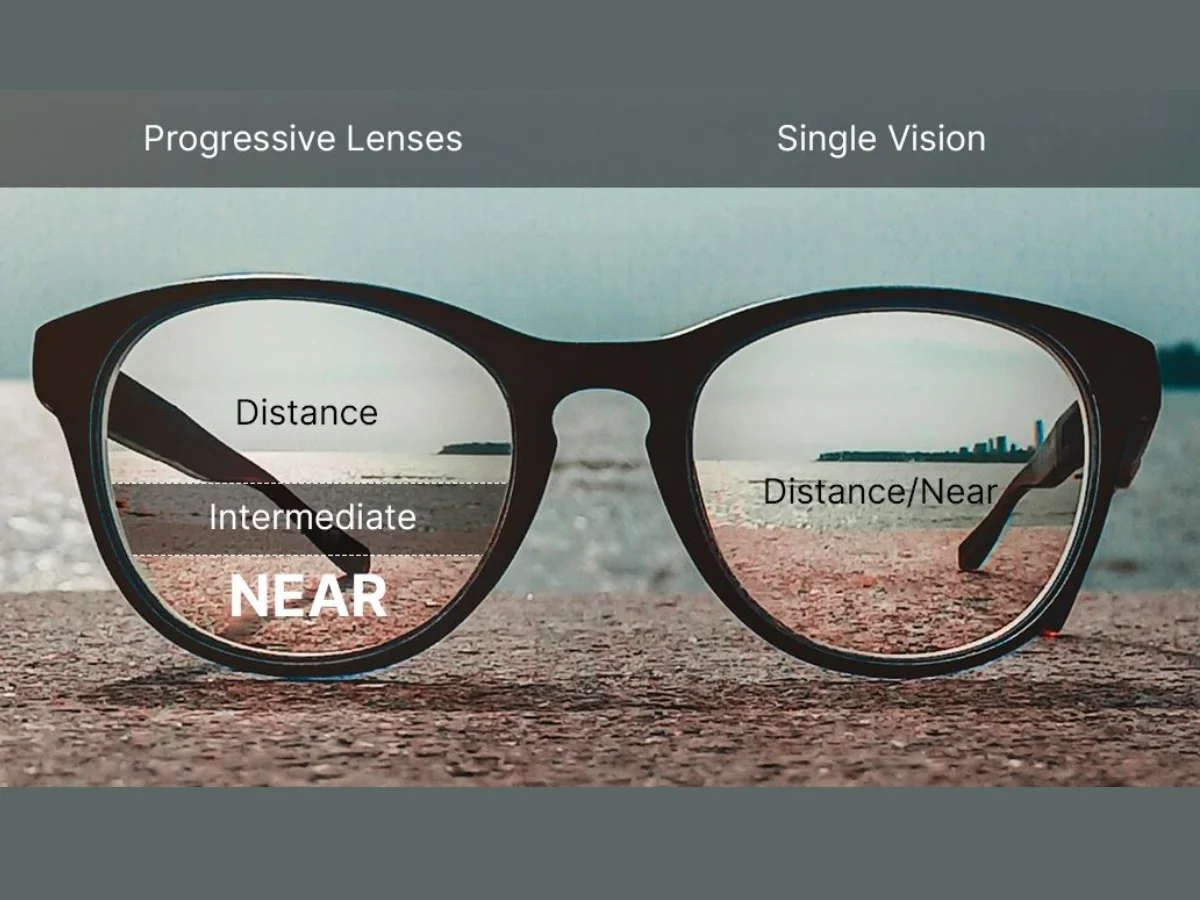In the world of eyewear, one size certainly does not fit all. Whether you’re reading a book, working on your computer, or driving, having the right pair of glasses is essential for optimal vision. For those who require both distance and close-up correction, progressive lenses have become a popular choice. But what if you need to switch between progressive lenses and single-vision glasses? In this article, we’ll explore the ins and outs of making this transition seamlessly.
Introduction
For individuals with presbyopia, a condition that affects near vision as we age, progressive lenses have been a game-changer. They offer a seamless transition between distance and near vision correction, eliminating the need to switch between multiple pairs of glasses.
Understanding Progressive Lenses
2.1. How Progressive Lenses Work
Progressive lenses have a gradual change in prescription from the top (for distance vision) to the bottom (for close-up tasks like reading). This gradient allows wearers to see clearly at all distances without the visible lines seen in bifocals or trifocals.
2.2. Advantages of Progressive Lenses
Progressive lenses provide several benefits, including:
- Natural Vision: Smooth transition between near and far vision.
- No Visible Lines: No unsightly lines on the lenses.
- Convenience: Eliminates the need to carry multiple pairs of glasses.
Single Vision Glasses: When Are They Necessary?
Single-vision glasses have a constant prescription throughout the lens, making them ideal for individuals who have a consistent vision correction need at all distances. They are often prescribed for tasks like reading or driving when progressive lenses may not be necessary.
Switching Between Progressive and Single Vision
4.1. Reasons to Switch
There are several reasons why someone might need to switch between progressive and single-vision glasses:
- Specialized Tasks: Single-vision glasses can provide a more focused vision for specific tasks.
- Comfort: Some people find single-vision glasses more comfortable for extended computer use or reading.
- Adaptation: Adapting to progressive lenses can take time, and some individuals prefer single-vision glasses initially.
4.2. Consult an Optometrist
Before making the switch, it’s crucial to consult your optometrist. They will assess your vision needs and provide the appropriate prescriptions for both progressive and single-vision glasses.
4.3. Adapting to the Change
Adapting to single-vision glasses after using progressives may take some time. You may notice differences in how you perceive objects at different distances. It’s essential to follow your optometrist’s guidance and wear each type of glasses as recommended.
Tips for a Smooth Transition
- Gradual Transition: If possible, gradually switch between progressive and single-vision glasses to allow your eyes to adapt.
- Prescription Clarity: Ensure that both pairs of glasses have up-to-date prescriptions.
- Regular Check-Ups: Schedule regular eye exams to monitor any changes in your vision needs.
Conclusion
Switching between progressive and single-vision glasses is entirely possible, and it’s essential to prioritize your visual comfort and clarity. Consult your optometrist for guidance on the best approach for your specific vision needs.
Frequently Asked Questions (FAQs)
7.1. Can I switch between progressive and single-vision glasses on my own?
While it’s possible to switch, it’s advisable to consult an optometrist to ensure the right prescription for each type of glasses.
7.2. How long does it take to adapt to single-vision glasses after using progressives?
The adaptation period varies from person to person. It may take a few days to a couple of weeks to fully adjust.
7.3. Are there any specific frame styles that work better for switching?
Frame styles depend on your personal preference and face shape. Opt for frames that offer comfort and stability.
7.4. Do I need separate prescriptions for progressive and single-vision glasses?
Yes, you will need separate prescriptions for each type of glass as they serve different purposes.
7.5. Are there any age-related considerations when switching?
As you age, your vision needs may change. Regular eye exams can help monitor these changes and ensure you have the right glasses for your current needs.
Read More: https://www.rozyjos.com/
More Related:
What Time Does Progressive Take Automatic Payments: A Guide for Policyholders
Does Progressive Cover Moving Trucks: What You Need to Know
Does State Farm Car Insurance Cover Rental Trucks: What You Need to Know
How Long Will State Farm Pay for a Rental Car Insurance Claim: Your Guide
What Happens If I Pay My Progressive Car Insurance Late: A Complete Guide
How Long Does It Take for Prescription Glasses to Be Ready at LensCrafters?
Progressive Roadside Assistance Reviews: Your Roadside Companion

